Welcome to the Czech Portal!
Vítejte na Českém portálu!

|

|
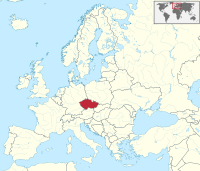
| |
The Czech Republic, also known as Czechia, is a landlocked country in Central Europe. Historically known as Bohemia, it is bordered by Austria to the south, Germany to the west, Poland to the northeast, and Slovakia to the southeast. The Czech Republic has a hilly landscape that covers an area of 78,871 square kilometers (30,452 sq mi) with a mostly temperate continental and oceanic climate. The capital and largest city is Prague; other major cities and urban areas include Brno, Ostrava, Plzeň and Liberec.
The Duchy of Bohemia was founded in the late 9th century under Great Moravia. It was formally recognized as an Imperial State of the Holy Roman Empire in 1002 and became a kingdom in 1198. Following the Battle of Mohács in 1526, all of the Crown lands of Bohemia were gradually integrated into the Habsburg monarchy. Nearly a hundred years later, the Protestant Bohemian Revolt led to the Thirty Years' War. After the Battle of White Mountain, the Habsburgs consolidated their rule. With the dissolution of the Holy Roman Empire in 1806, the Crown lands became part of the Austrian Empire.
In the 19th century, the Czech lands became more industrialized, and in 1918 most of it became part of the First Czechoslovak Republic following the collapse of Austria-Hungary after World War I. Czechoslovakia was the only country in Central and Eastern Europe to remain a parliamentary democracy during the entirety of the interwar period. After the Munich Agreement in 1938, Nazi Germany systematically took control over the Czech lands. Czechoslovakia was restored in 1945 and three years later became an Eastern Bloc communist state following a coup d'état in 1948. Attempts to liberalize the government and economy were suppressed by a Soviet-led invasion of the country during the Prague Spring in 1968. In November 1989, the Velvet Revolution ended communist rule in the country and restored democracy. On 31 December 1992, Czechoslovakia was peacefully dissolved, with its constituent states becoming the independent states of the Czech Republic and Slovakia.
The Czech Republic is a unitary parliamentary republic and developed country with an advanced, high-income social market economy. It is a welfare state with a European social model, universal health care and free-tuition university education. It ranks 32nd in the Human Development Index. The Czech Republic is a member of the United Nations, NATO, the European Union, the OECD, the OSCE, the Council of Europe and the Visegrád Group. (Full article...)
Selected article -
Czech (/tʃɛk/ CHEK}; endonym: čeština [ˈtʃɛʃcɪna]), historically also known as Bohemian (/boʊˈhiːmiən, bə-/ boh-HEE-mee-ən, bə-; Latin: lingua Bohemica), is a West Slavic language of the Czech–Slovak group, written in Latin script. Spoken by over 10 million people, it serves as the official language of the Czech Republic. Czech is closely related to Slovak, to the point of high mutual intelligibility, as well as to Polish to a lesser degree. Czech is a fusional language with a rich system of morphology and relatively flexible word order. Its vocabulary has been extensively influenced by Latin and German.
The Czech–Slovak group developed within West Slavic in the high medieval period, and the standardization of Czech and Slovak within the Czech–Slovak dialect continuum emerged in the early modern period. In the later 18th to mid-19th century, the modern written standard became codified in the context of the Czech National Revival. The most widely spoken non-standard variety, known as Common Czech, is based on the vernacular of Prague, but is now spoken as an interdialect throughout most of Bohemia. The Moravian dialects spoken in Moravia and Czech Silesia are considerably more varied than the dialects of Bohemia. (Full article...)Selected picture

Photographer: Multimotyl; License: Dual (GNU Free Documentation License and Creative Commons CC-BY-SA)
In this month
- 1 July 1991 – The Warsaw Pact is dissolved in Prague
- 6 July 1415 – Church reformer Jan Hus is burned at the stake, marked by a state holiday since 1925.
- 9 July 1357 – Charles IV reportedly lays the first stone at the Charles Bridge (pictured) in Prague
- 29 July 1817 – Foundation of Moravské zemské muzeum in Brno under the name Františkovo muzeum, the second-oldest museum in the country
- 30 July 1419 – The first of the Defenestrations of Prague: a group led by priest Jan Želivský go to Prague's New Town Hall, where they throw councillors out of the windows, starting the Hussite Wars
Categories
Selected biography -
Petra Kvitová, OLY (Czech: [ˈpɛtra ˈkvɪtovaː]; born 8 March 1990) is an inactive Czech professional tennis player. Known for her powerful left-handed groundstrokes and variety, Kvitová has won 31 career singles titles, including two major titles at Wimbledon in 2011 and in 2014. She also won a bronze medal in singles while representing the Czech Republic at the 2016 Rio Olympics. Her career-high ranking of world No. 2 was achieved on 31 October 2011.
Kvitová first gained notice by defeating then-world No. 1 Dinara Safina in the third round of the 2009 US Open. This was followed by her first major semifinal appearance at the 2010 Wimbledon Championships. Then, during her breakthrough season in 2011, Kvitová won her first major title at Wimbledon over Maria Sharapova in the final, and becoming the first player of either gender born in the 1990s to win a major. At the end of the season, she won the WTA Championships on her debut. She also helped lead the Czech Republic to victory in the Fed Cup that same year, making it the Czech Republic's first such title as an independent nation. (Full article...)Did you know?

- ...that, although Mozart never visited Kroměříž, much of the Academy Award-winning film Amadeus was filmed at the local episcopal residence?
- ... that the leftist Czechoslovak Chemical Workers' Union was expelled from the OSČ trade union centre in 1922?
- ... that Czech international footballer Patrik Gedeon went to play club football in Liechtenstein in the middle of his career?
- ... that a 1926 voyage to Java inspired Czech poet Konstantin Biebl for the remainder of his life?
General images
Related portals
Topics

Czech lands: Bohemia • Moravia • Czech Silesia
History: Únětice culture • Boii • Marcomanni • Samo • Great Moravia • Přemyslid dynasty • Lands of the Bohemian Crown • Czech lands (1526–1648) • 1648–1867 • 1867–1918) • Czechoslovakia • Czech Republic
Geography: Lakes • Protected areas • Regions • Rivers
Law: Judiciary • Law enforcement • Supreme Court of the Czech Republic
Politics: Administrative divisions • Government • Constitution • Elections • Foreign relations • Army • Parliament • Political parties • President • Prime Minister
Economy: Banks • Czech koruna • Energy • Oil and gas deposits • Stock Exchange • Tourism • Transport
Culture: Architecture • Art • Cinema • Cuisine • Demographics • Education • Language • Literature • Media • Music • Philosophy • Prostitution • Public holidays • Religion • Sport • Television • Video games
Symbols: Flag • Coat of arms • National anthem (Kde domov můj)
Lists: Outline of the Czech Republic • List of Czech Republic–related topics
WikiProjects
Featured and good content
Things to do
Wikimedia
The following Wikimedia Foundation sister projects provide more on this subject:
-
 Commons
Commons
Free media repository -
 Wikibooks
Wikibooks
Free textbooks and manuals -
 Wikidata
Wikidata
Free knowledge base -
 Wikinews
Wikinews
Free-content news -
 Wikiquote
Wikiquote
Collection of quotations -
 Wikisource
Wikisource
Free-content library -
 Wikiversity
Wikiversity
Free learning tools -
 Wikivoyage
Wikivoyage
Free travel guide -
 Wiktionary
Wiktionary
Dictionary and thesaurus
-

-

-

-

-
Random portal
Purge server cache







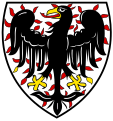
























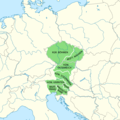


















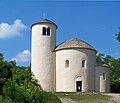





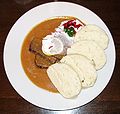
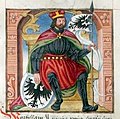













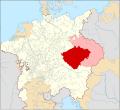















Recent Comments